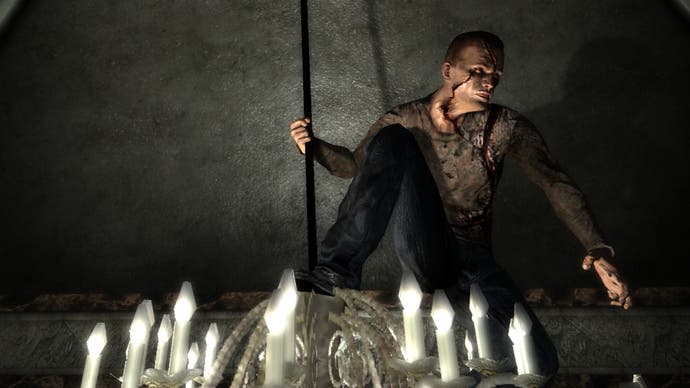Atari's Phil Harrison
On Alone in the Dark and switching roles.
After four years of development, the first next-gen instalment in the Alone in the Dark series is almost here. Atari held a press event in London last week to reveal more of the game, and newly installed Infogrames president Phil Harrison was on hand to have a chat to us about it.
The artist formerly known as the head of Sony Worldwide Studios made it clear he was there to discuss Alone in the Dark alone, politely declining to answer questions about what he describes as his "previous life". But he was happy to talk about plenty of other topics - so read on to find out where Atari's headed next, how Harrison thinks the industry is changing and why he believes AITD could be one of the last games of its kind.
I think so. The first time I was exposed to the game I was blown away with what Eden created, the level of attention to detail and the passion they have for the integrity of the story. I hope they feel proud of it; they should do.

Good question. I think there are a couple of things which are really innovative. The contemporary setting of modern-day New York, done with a twist, makes it very accessible and appealing to a mass market. It's not very fantasy-driven, although there is clearly a fantastic twist to it.
There are some really compelling elements to the story that will keep you gripped. The ending is fantastic; it's a great videogaming ending which will keep you guessing a little bit.
Technically they've done a few things which are really excellent. The characters, the facial animation and the characterisation, that's really good. Fire as a weapon and fire as a friend or foe is quite clever. The way that's linked to physics, so the particles can set fire to an entire room and it will fall down around you, it's really nicely done, and I've never seen that before. The use of some other graphical effects - lighting, smoke, water - are really first class. Some of the best I've ever seen.
The inventory system's quite clever. The way you combine objects to build new objects is nicely done, and it's quite sophisticated. There's the episodic structure, which works really well. So there are a lot of things which I think are very innovative.
Each episode has a start, a middle and an end. Each episode has plot development, twists, a cliffhanger, gameplay innovation - all the way through the game. There's also a 'previously on Alone in the Dark' mechanism, which is really useful. If you come back to the game after a week and you can't quite remember where you were, that mechanic gets you reimmersed.

You don't have to skip anything. If you've gotten stuck and you want to move forward and play a bit more of the game, you can always come back. But if you want to play the game start to finish, you'll be rewarded with unique Achievements. So, the more committed gamer who wants to prove their skill without skipping around will get Achievements unique to them.
Totally. There are a lot of self-referential elements which people who played the original game will recognise.
But it's not really fair to call it a survival-horror game. It's an action-horror game. They've really cranked up the impact ratio and the suspense ratio. It's not just about crawling down dark corridors getting scared; it's a much more visceral experience than the original adventure games were. That, I think, is a reflection of modern tastes in videogaming, and also what you can do technically with hardware these days. So it's not a survival-horror game in the traditional sense; it's reinvented for the 21st century.








